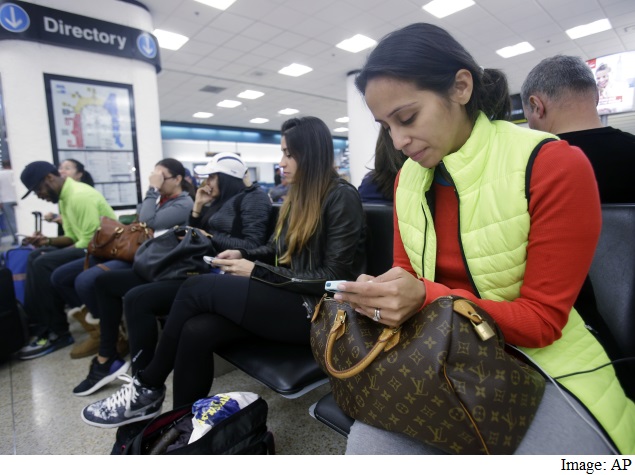Smartphones Can Improve Health of Poor Urban Women: Study

In the survey of a diverse group of almost 250 young, low-income, inner-city pregnant and post-partum women, the researchers found that more than 90 percent use smartphones or regular cellphones to give and get information.
"Pinning down which technologies the at-risk women use is a key step in finding how to improve health in the inner city," said study senior author Wendy Bennett, assistant professor of medicine at Johns Hopkins University School of Medicine.
The findings, published in the Journal of Internet Medicine Research, suggest that public health care services can reach poor urban women through personalised cellphone and Internet-based approaches.
Previous studies had shown that many of these women do not return for obstetric or preventive health visits after delivery.
"Pregnancy and the year after delivery - when women must see a doctor - give us a window of opportunity to lock in lifelong preventive health behaviours for them and their families," Bennett said.
"But these opportunities are often missed because many women do not return for care or stay engaged with providers. If we could better understand their use of information and communication technology, we could likely design more appropriate, culturally sensitive ways to reach and help them," Bennett added.
"Our study highlights the potential for Internet and communication technology where individuals may have multiple ways of reaching out for health information, rather than through a primary care provider alone," first author of the new study Nymisha Chilukuri from Johns Hopkins University School of Medicine said.
Get your daily dose of tech news, reviews, and insights, in under 80 characters on Gadgets 360 Turbo. Connect with fellow tech lovers on our Forum. Follow us on X, Facebook, WhatsApp, Threads and Google News for instant updates. Catch all the action on our YouTube channel.
Related Stories
- Samsung Galaxy Unpacked 2025
- ChatGPT
- Redmi Note 14 Pro+
- iPhone 16
- Apple Vision Pro
- Oneplus 12
- OnePlus Nord CE 3 Lite 5G
- iPhone 13
- Xiaomi 14 Pro
- Oppo Find N3
- Tecno Spark Go (2023)
- Realme V30
- Best Phones Under 25000
- Samsung Galaxy S24 Series
- Cryptocurrency
- iQoo 12
- Samsung Galaxy S24 Ultra
- Giottus
- Samsung Galaxy Z Flip 5
- Apple 'Scary Fast'
- Housefull 5
- GoPro Hero 12 Black Review
- Invincible Season 2
- JioGlass
- HD Ready TV
- Laptop Under 50000
- Smartwatch Under 10000
- Latest Mobile Phones
- Compare Phones
- OPPO Reno 15 Pro
- OPPO Reno 15
- Vivo Y500 Pro
- Realme GT 8 Pro Aston Martin F1 Limited Edition
- Huawei Mate 70 Air
- Moto G57
- Moto G57 Power
- Motorola Edge 70
- MacBook Pro 14-inch (M5, 2025)
- Asus Vivobook S16 (S3607QA)
- iQOO Pad 5e
- OPPO Pad 5
- Noise Diva 2
- Noise Halo 2
- Acerpure Nitro Z Series 100-inch QLED TV
- Samsung 43 Inch LED Ultra HD (4K) Smart TV (UA43UE81AFULXL)
- Asus ROG Ally
- Nintendo Switch Lite
- Haier 1.6 Ton 5 Star Inverter Split AC (HSU19G-MZAID5BN-INV)
- Haier 1.6 Ton 5 Star Inverter Split AC (HSU19G-MZAIM5BN-INV)















